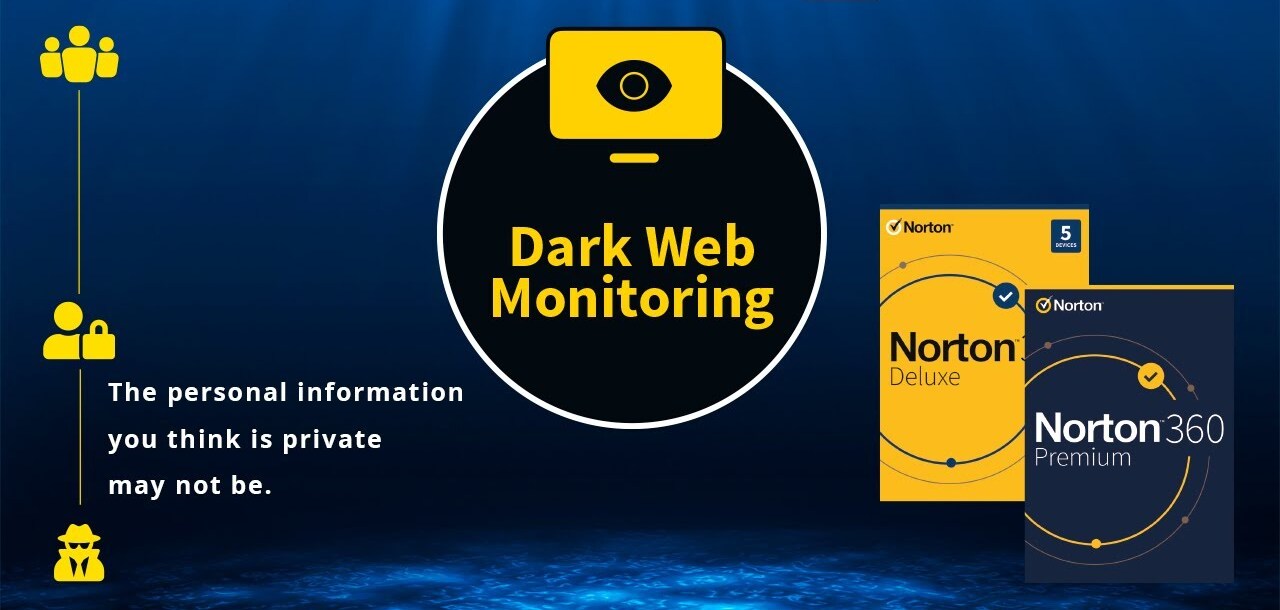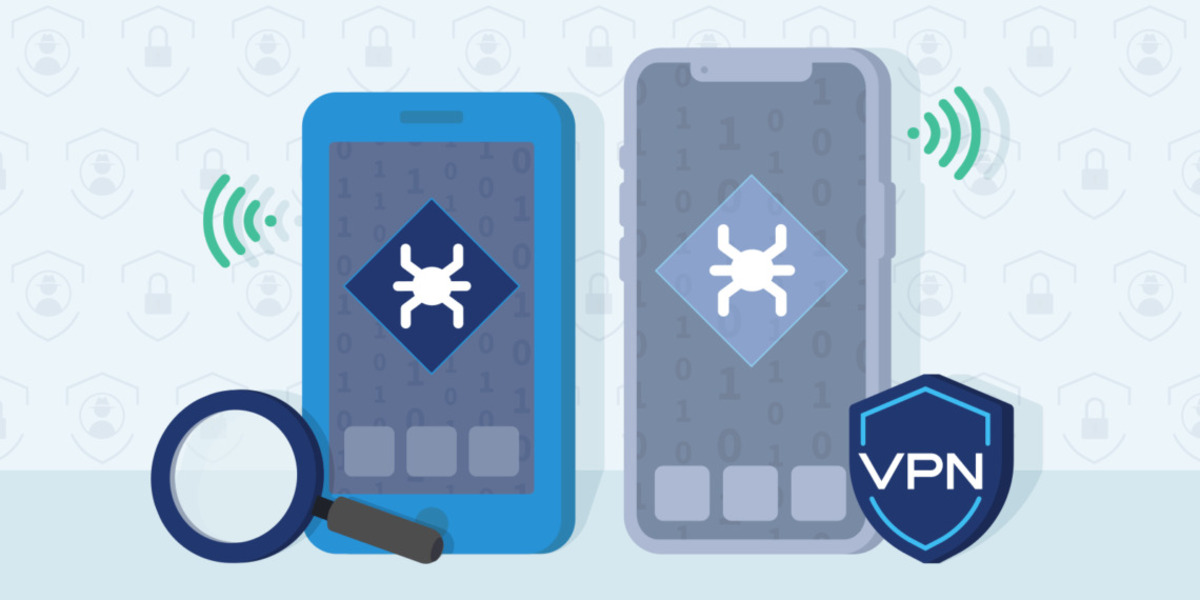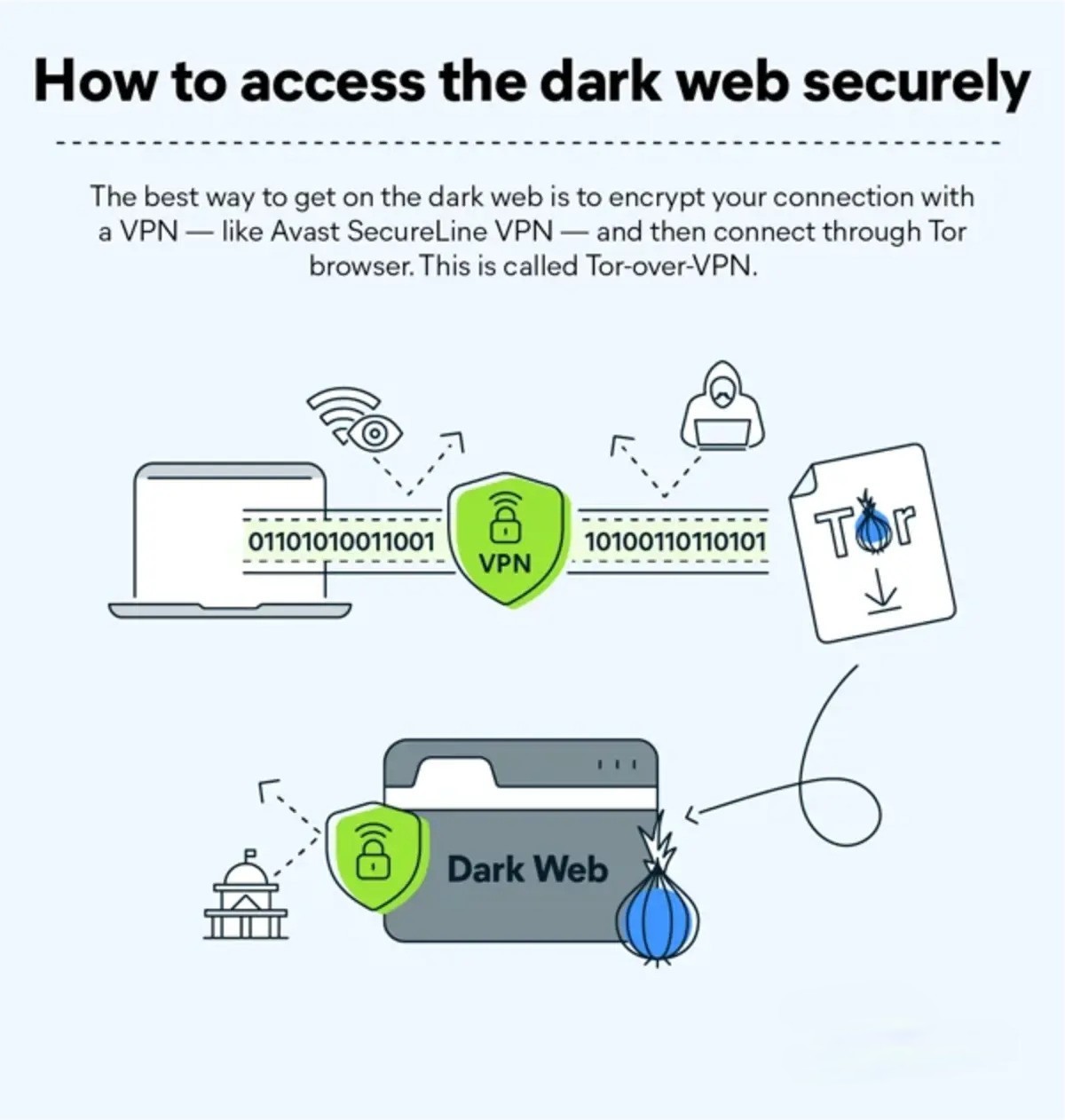The Origins of the Dark Web
The origins of the dark web can be traced back to the early days of the internet, where anonymity and privacy were not a priority. In the 1990s, the internet was primarily used for research, communication, and commerce. However, as the web grew, so did the need for secure and anonymous communication channels.
One of the key milestones in the creation of the dark web was the development of Tor, short for The Onion Router. Tor was initially developed by the United States Naval Research Laboratory in the mid-1990s as a means to protect government communications. It was later released as an open-source project, allowing anyone to use it.
Tor works by routing internet traffic through a series of encrypted layers, or nodes, which are operated by volunteers. Each node only knows the IP address of the previous and next node, effectively hiding the true origin and destination of the web traffic. This makes it extremely difficult for anyone, including governments and internet service providers, to track or intercept communication.
While Tor provided a way to browse the internet anonymously, it wasn’t until the early 2000s that the dark web as we know it began to take shape. The dark web refers to the part of the internet that is not indexed by search engines and can only be accessed with special software like Tor.
In the early days, the dark web primarily served as a haven for whistleblowers, political dissidents, and journalists who needed a secure platform to communicate and share sensitive information. However, just as technology can be used for both good and nefarious purposes, the dark web quickly became a hub for illegal activities.
Cybercriminals began to take advantage of the anonymity provided by the dark web to conduct illegal activities such as drug trafficking, weapon sales, and hacking services. The rise of anonymous marketplaces and the acceptance of cryptocurrencies like Bitcoin further fueled the growth of the dark web economy.
It is important to note that the dark web is just a small portion of the larger deep web, which refers to all the unindexed and password-protected websites on the internet. While the dark web is often associated with illegal activities, it is also home to legitimate platforms that prioritize privacy and freedom of speech.
In recent years, law enforcement agencies and governments around the world have made efforts to crack down on illegal activities on the dark web. The takedown of Silk Road, one of the most infamous anonymous marketplaces, in 2013 was a significant blow to the dark web ecosystem.
Despite these efforts, the dark web continues to evolve and adapt. New technologies and decentralized platforms are emerging, making it even more challenging for authorities to combat cybercrime. As the dark web remains shrouded in mystery and intrigue, it is crucial for individuals to exercise caution and vigilance when navigating this hidden part of the internet.
The Creation of Tor
The creation of Tor (The Onion Router) marked a significant milestone in the development of the dark web. Tor was initially developed by the United States Naval Research Laboratory in the mid-1990s as a means to protect government communications. However, it has since evolved into a widely used software that enables anonymous browsing and communication for individuals all over the world.
The concept behind Tor is to provide a secure and private browsing experience by routing internet traffic through a network of encrypted layers, known as nodes. Each node only knows the IP address of the previous and next node, ensuring that the true origin and destination of the web traffic remain hidden.
Tor accomplishes this by using a technique known as onion routing. When a user accesses a website through Tor, their request is encrypted multiple times, creating multiple layers of encryption akin to the layers of an onion. As the request passes through each node, one layer of encryption is peeled off, until it reaches its final destination, decrypted and delivered.
The use of multiple layers of encryption ensures that no single node or entity can trace the complete path of the web traffic, making it incredibly difficult to identify the source or destination of the data. This not only provides anonymity for users, but it also protects against censorship and surveillance by governments and internet service providers.
One of the notable features of Tor is its ability to access websites hosted on the dark web. The dark web is a part of the internet that is not indexed by search engines and can only be accessed through special software like Tor. This feature has given rise to a plethora of anonymous marketplaces and underground forums where illicit activities take place.
Tor operates on a distributed network of volunteer-run nodes, further enhancing its security and privacy. Anyone can contribute to the Tor network by running a Tor relay, which helps randomly select relays for routing traffic and ensures that no single entity controls the network. This decentralized approach makes it extremely difficult for adversaries to compromise the security and anonymity of Tor users.
While Tor has garnered a reputation for being a tool that enables illegal activities, it is important to recognize that it also serves as a lifeline for individuals living in repressive regimes or those concerned about government surveillance. Journalists, activists, and whistleblowers rely on Tor to communicate and share sensitive information securely without fear of retribution.
The creation of Tor has undoubtedly had a profound impact on the internet landscape, providing individuals worldwide with the ability to browse and communicate anonymously. As the technology continues to evolve, it is increasingly important for users to understand its capabilities and limitations in order to navigate the online world safely and responsibly.
The Role of Intelligence Agencies
Intelligence agencies play a significant role in the development and monitoring of the dark web. They have been both beneficiaries and adversaries of the anonymity and encryption provided by platforms like Tor. While their involvement in the dark web is primarily focused on national security, intelligence agencies have also faced criticism for engaging in surveillance and exploiting vulnerabilities for their own gain.
One of the initial drivers for the creation of Tor was the need for secure and anonymous communication within intelligence agencies. By utilizing Tor, these agencies could protect their sensitive communications from prying eyes and potential cyber adversaries. In fact, it was the United States Naval Research Laboratory, a government agency, that developed Tor as a tool to safeguard government communications.
In recent years, intelligence agencies have shown a keen interest in monitoring and infiltrating the dark web to gather intelligence on criminal activities, terrorism, and other security threats. They deploy sophisticated techniques to identify individuals participating in illegal transactions, track the flow of cryptocurrencies, and dismantle criminal networks operating on the dark web.
However, the involvement of intelligence agencies raises concerns about the balance between national security and individual privacy. The indiscriminate surveillance of internet users, even those not involved in criminal activities, can undermine the fundamental right to privacy and erode public trust. The tension between security and privacy continues to be a subject of debate and scrutiny.
Intelligence agencies have also been accused of using vulnerabilities in software and encryption protocols to gain access to the dark web and track down criminals. While their efforts may be seen as necessary for national security, it raises ethical questions about the potential abuse of power and the rights of individuals to privacy in the digital age.
The relationship between intelligence agencies and the dark web is a complex one. While they initially helped create the means to secure communication online, they now face the challenges posed by new technologies and anonymized platforms. Adapting to these challenges requires a delicate balance between protecting national security and upholding individual rights.
As technology continues to evolve, intelligence agencies will undoubtedly play a crucial role in shaping the future of the dark web. Their efforts to combat cybercrime, terrorism, and other security threats are vital in maintaining a safe and stable online environment. However, it is equally important to ensure that these efforts are conducted within the boundaries of legal and ethical frameworks that respect individual privacy and preserve civil liberties.
Anonymous Marketplaces and Cryptocurrency
Anonymous marketplaces and cryptocurrencies have played a significant role in the growth and operation of the dark web. These technologies have provided a platform for illegal activities and facilitated anonymous transactions, challenging the traditional financial system and posing unique challenges for law enforcement agencies.
The anonymity provided by platforms like Tor has created an ideal environment for the emergence of anonymous marketplaces on the dark web. These marketplaces allow users to buy and sell a variety of illicit goods and services, including drugs, stolen data, counterfeit products, and hacking tools.
Cryptocurrencies, with Bitcoin being the most well-known, have become the preferred method of payment on the dark web. Cryptocurrencies provide a level of anonymity and decentralization that traditional financial systems lack. Transactions are recorded on a public ledger called the blockchain, but the identities of the parties involved are often pseudonymous.
The use of cryptocurrencies allows for discreet and borderless transactions, making it difficult for authorities to trace the flow of funds and identify the individuals involved in illegal activities. Additionally, cryptocurrencies offer a degree of security against theft and censorship, further attracting users on the dark web.
However, the rise of anonymous marketplaces and cryptocurrencies has not gone unnoticed by law enforcement agencies. They have made significant efforts to track and apprehend individuals involved in illegal activities on the dark web. Investigative techniques, technological advancements, and international collaborations have all contributed to the successes in combating cybercrime on these platforms.
To address the challenges posed by anonymous marketplaces, law enforcement agencies have employed undercover agents, developed specialized cyber investigation units, and utilized advanced digital forensics. They have also targeted the infrastructure supporting these marketplaces, such as seizing domain names and servers.
The battle between law enforcement and criminals on the dark web is an ongoing cat-and-mouse game. As authorities develop new techniques to identify and track illegal activities, criminals adapt their methods to remain anonymous and elusive. This constant evolution underscores the complexity of regulating and investigating activities on the dark web.
In response to the risks associated with cryptocurrencies and their potential for facilitating illegal activities, regulatory efforts have been implemented. Cryptocurrency exchanges are now subject to Know Your Customer (KYC) and Anti-Money Laundering (AML) regulations in many jurisdictions, aiming to enhance transparency and accountability.
The relationship between anonymous marketplaces, cryptocurrencies, and the dark web remains intertwined. While these technologies present challenges for law enforcement, they also provide opportunities for innovation and financial inclusion in legitimate sectors. Striking a balance between privacy, security, and regulation will continue to be a complex task as society navigates the evolving landscape of digital currencies and the dark web.
Silk Road: The Dark Web’s Infamous Marketplace
Silk Road is perhaps the most notorious marketplace to have ever existed on the dark web. Operated by Ross Ulbricht under the pseudonym “Dread Pirate Roberts,” Silk Road gained notoriety for facilitating the sale of illegal drugs, counterfeit documents, hacking tools, and other illicit goods and services.
Launched in 2011, Silk Road quickly gained popularity due to its user-friendly interface and its innovative use of Bitcoin for transactions. The platform allowed buyers and sellers to connect anonymously, ensuring a degree of security and privacy for its users.
Silk Road boasted a reputation system that allowed buyers to rate sellers based on the quality of their products and services. It also implemented an escrow system to ensure that transactions were completed satisfactorily before funds were released to the seller.
At its height, Silk Road facilitated billions of dollars’ worth of transactions, attracting thousands of users from around the world. It operated on the principles of libertarianism and internet freedom, aiming to challenge the control that governments and corporations had over the flow of goods and services.
However, Silk Road’s success came to an end in 2013 when law enforcement agencies, including the FBI, shut down the marketplace and arrested its founder. Ross Ulbricht was convicted on charges of money laundering, drug trafficking, computer hacking, and identity theft, among others.
The takedown of Silk Road marked a significant victory for law enforcement and demonstrated the growing capabilities of governments to infiltrate the dark web. It also exposed the vulnerabilities of even the most sophisticated anonymous marketplaces.
Following the demise of Silk Road, several other anonymous marketplaces emerged to fill the void, but none have achieved the same level of notoriety. The Silk Road case served as a warning to other dark web operators that they are not impervious to law enforcement action.
Despite its closure, the legacy of Silk Road remains. It sparked public debate about the effects of drug prohibition, the role of cryptocurrencies, and the boundaries of online anonymity. Silk Road demonstrated the power and potential dangers of the dark web, prompting governments and authorities to adapt their strategies to combat illicit activities.
Today, Silk Road stands as a symbol of the dark web’s underworld and serves as a reminder of the ongoing challenges of regulating and policing the digital frontier. It serves as a cautionary tale of the risks involved in participating in illegal activities on the dark web, as the consequences for those involved can be severe.
The Evolution of Dark Web Technologies
The dark web has witnessed a continuous evolution in its technologies, allowing it to adapt and evolve alongside advancements in internet infrastructure and security. From the early days of Tor to the emergence of decentralized platforms, these technological advancements have shaped the landscape of the dark web and influenced its growth and accessibility.
Tor, also known as The Onion Router, has been at the forefront of enabling anonymous and secure browsing on the dark web. It has evolved over the years with regular updates and security enhancements to counter emerging threats and vulnerabilities. The Tor network has expanded to include thousands of volunteer-run nodes, providing a decentralized infrastructure for anonymous web browsing.
In recent years, new technologies have challenged the traditional centralized approach of the dark web. Decentralized platforms, built on blockchain technology, aim to achieve heightened anonymity and security by eliminating central authorities. These platforms, such as the InterPlanetary File System (IPFS) and ZeroNet, allow for peer-to-peer file sharing and web hosting, making it even more difficult to track and censor content on the dark web.
Another noteworthy development is the use of alternative protocols and networks, such as the Invisible Internet Project (I2P) and Freenet. These networks offer alternative means of accessing the dark web, providing additional layers of anonymity by obfuscating the origin and destination of internet traffic.
Furthermore, the emergence of encrypted communication apps and secure messaging platforms has provided dark web users with robust tools for anonymous communication. These technologies incorporate end-to-end encryption, ensuring that only the intended recipients can access the content of their messages.
As dark web technologies continue to evolve, so do the challenges faced by law enforcement agencies and authorities. The decentralized nature of the dark web makes it increasingly difficult to identify and apprehend individuals involved in illegal activities. Investigative techniques must evolve to keep pace with these advancements, utilizing innovative methods and collaborations to combat cybercrime.
However, as technology progresses, so do the risks and vulnerabilities associated with the dark web. New attack vectors, such as advanced malware and exploits, pose threats to both users and the overall security of the internet. Ongoing research and development in cybersecurity are crucial to mitigate these risks and protect individuals and organizations from emerging threats.
The rapid evolution of dark web technologies raises important questions about the balance between privacy, security, and societal values. Governments grapple with the challenge of regulating emerging technologies while ensuring the protection of individual rights and public safety.
Overall, the evolution of dark web technologies reflects the dynamic nature of the internet and the perpetual cat-and-mouse game between those seeking anonymity and privacy, and those striving to maintain law and order in the digital realm.
The Deep Web vs. the Dark Web: Understanding the Difference
There is often confusion between the terms “deep web” and “dark web,” but they are not interchangeable. Understanding the difference between these two concepts is essential to navigate the internet landscape more effectively and dispel common misconceptions.
The deep web refers to all the unindexed and password-protected content on the internet. This includes everything from private databases, online banking systems, academic resources, and government archives to internal corporate networks and personal email accounts. These parts of the web are not accessible through search engines like Google and require specific access credentials.
In contrast, the dark web is a subset of the deep web and refers to the part of the internet that is intentionally hidden and only accessible through anonymizing software like Tor. Unlike the deep web, which encompasses a wide range of legitimate websites and content, the dark web is associated with illicit activities and operates with a high level of anonymity.
On the dark web, users can access anonymous marketplaces, illicit forums, hacking services, and other illegal content that is not readily accessible on the surface web. It is a breeding ground for cybercriminals, illegal trade, and illicit activities, attracting individuals seeking to operate in the shadows for various reasons.
The distinction between the deep web and dark web lies in their respective intentions. The deep web contains legitimate content that requires specific permissions or credentials to access. It is a necessary part of the internet, safeguarding sensitive and private information.
On the other hand, the dark web is characterized by its anonymity and serves as a refuge for individuals engaging in illegal activities or seeking a platform to express extreme ideologies. While anonymity can be important for certain legitimate purposes, such as protecting whistleblowers or human rights activists, it is also exploited by cybercriminals to carry out their illicit operations.
It is crucial to recognize that the dark web is a small fraction of the overall internet. Most internet users will never encounter it unless they intentionally seek out access. The majority of online activities, such as browsing websites, using search engines, and engaging in social media, take place on the surface web, which is indexed and easily accessible to anyone with an internet connection.
Navigating the deep and dark web requires caution and discretion. It is important to be aware of the potential risks associated with these parts of the internet, including malware, scams, and exposure to illegal content. Users should make informed decisions regarding their online activities and ensure they are adhering to legal and ethical boundaries.
Understanding the difference between the deep web and dark web is crucial to dispel common misconceptions and promote a clearer understanding of the internet landscape. Recognizing the legitimate uses of the deep web and the illicit activities associated with the dark web allows for a more balanced and informed perspective on the complexities of the online world.
The Silk Road Takedown: A Blow to the Dark Web
The takedown of Silk Road in 2013 marked a significant turning point in the battle between law enforcement agencies and the dark web. Silk Road, the infamous anonymous marketplace, was at the center of illegal activities on the dark web, facilitating the trade of drugs, forged documents, hacking tools, and other illicit goods and services.
The Silk Road marketplace, operated by Ross Ulbricht under the pseudonym “Dread Pirate Roberts,” gained notoriety for its user-friendly interface and innovative use of Bitcoin for transactions. It quickly became the go-to platform for individuals looking to engage in illegal activities with a level of anonymity not easily achievable using traditional means.
However, the success of Silk Road attracted the attention of law enforcement agencies, leading to a joint operation that eventually resulted in its demise. The Federal Bureau of Investigation (FBI), in collaboration with other agencies, managed to apprehend Ross Ulbricht and shut down the platform.
The takedown of Silk Road sent shockwaves through the dark web community. It served as a clear message that no matter how anonymous or secure a platform may seem, law enforcement agencies are capable of infiltrating and dismantling criminal operations.
The impact of Silk Road’s takedown was felt not only by its operators but also by the wider dark web ecosystem. It demonstrated that the veil of anonymity, which many mistakenly believed to be impenetrable, could be pierced by determined law enforcement efforts.
The Silk Road case was a significant blow to the dark web, exposing vulnerabilities that were not previously apparent. The arrest and subsequent conviction of Ross Ulbricht sent a strong message that even in the digital realm, those engaging in illegal activities are not beyond the reach of the law.
However, the takedown of Silk Road did not spell the end of the dark web. While the closure of the infamous marketplace disrupted the dark web ecosystem, other anonymous marketplaces quickly rose to fill the void. The incident served as a sobering reminder to dark web operators that they are not invincible and that law enforcement agencies are constantly adapting and developing sophisticated techniques to combat cybercrime.
Moreover, the Silk Road case shed light on the need for improved collaboration between international law enforcement agencies to effectively address the global challenges posed by cybercrime and the dark web. It highlighted the importance of sharing intelligence and resources to disrupt criminal networks operating across borders.
Today, the dark web continues to evolve, as new marketplaces and technologies emerge. While law enforcement agencies have made significant strides in combating illegal activities, including drugs and cybercrime, the cat-and-mouse game between authorities and criminals on the dark web remains ongoing.
The Silk Road takedown represents a watershed moment in the fight against the dark web, exposing its vulnerabilities and sending a clear message to those engaging in illegal activities. It serves as a reminder that while the dark web may provide a cloak of anonymity, it is not immune to law enforcement’s pursuit of justice.
The Dark Web Today: Opportunities and Risks
The dark web has evolved significantly since its inception, presenting both opportunities and risks in today’s digital landscape. Understanding these dynamics is crucial to navigating this hidden realm of the internet responsibly and maintaining a safe online presence.
One of the significant opportunities the dark web presents is the ability to safeguard privacy and freedom of speech. For individuals living under repressive regimes or for those concerned about government surveillance, the dark web can provide a platform to express opinions, share information, and organize without fear of retribution.
Moreover, the dark web serves as a valuable resource for journalists, activists, and whistleblowers who rely on anonymous channels to communicate securely. It allows them to uncover and expose corruption, human rights violations, and other injustices that might otherwise go unnoticed.
On the other hand, the dark web also poses significant risks. The anonymous nature of the dark web attracts cybercriminals, fostering an environment for illegal activities to thrive. Drug trafficking, weapons sales, hacking services, and identity theft are just a few of the illicit activities that occur within the dark web ecosystem.
Individuals who venture onto the dark web also expose themselves to various risks. Malware, scams, and phishing attacks are prevalent, targeting unsuspecting users who may inadvertently compromise their personal information or become victims of financial fraud.
Furthermore, participating in illegal activities on the dark web can have severe legal consequences. Law enforcement agencies are increasingly dedicating resources to track down and prosecute individuals involved in cybercrime and illicit trade. The veil of anonymity offered by the dark web is not foolproof, and those engaging in illegal activities can face substantial penalties if caught.
As the dark web continues to evolve, new technologies and decentralized platforms are emerging, creating both opportunities and challenges. These advancements offer the potential for increased privacy and security but also present a challenge for law enforcement agencies in combating cybercrime.
To navigate the dark web safely, individuals should exercise caution and follow best practices. This includes using robust security measures, such as secure communication tools and reputable virtual private networks (VPNs), to protect personal information and maintain privacy.
Education and awareness are also essential in safeguarding against the risks of the dark web. Understanding the potential threats, recognizing common scams, and adopting a skeptical mindset can help individuals distinguish between legitimate content and malicious intent.
Governments and international law enforcement agencies continue to grapple with the challenges posed by the dark web. Striking the right balance between cracking down on illegal activities and protecting individual rights and privacy remains a complex task.
Overall, the dark web offers a complex landscape of opportunities and risks. While it can provide anonymity, freedom of speech, and access to otherwise censored information, individuals must proceed with caution and actively mitigate the potential dangers. By doing so, they can engage in responsible and secure online behavior while minimizing their exposure to the inherent risks of the dark web.
Conclusion
The dark web is a complex and ever-evolving part of the internet that demands our attention and understanding. It is a realm shrouded in anonymity, presenting both opportunities and risks that can significantly impact individuals, society, and the online world as a whole.
With the creation of Tor and the development of other dark web technologies, individuals gained the ability to browse and communicate anonymously. This provided a platform for free expression, privacy protection, and resistance against censorship. However, it also created an environment for illicit activities to flourish.
The takedown of Silk Road demonstrated the potential for law enforcement agencies to infiltrate and disrupt criminal operations on the dark web. Yet, the ongoing battle between authorities and cybercriminals continues, as new marketplaces emerge and technologies evolve.
In today’s digital landscape, it is crucial for individuals to navigate the dark web responsibly. This involves understanding the difference between the deep web and the dark web, recognizing the opportunities and risks inherent in this hidden realm, and taking measures to protect personal information and privacy.
Governments and law enforcement agencies face the challenge of striking a balance between maintaining public safety and preserving individual rights and freedoms. The need for collaboration and innovation in the fight against cybercrime and illegal activities on the dark web is paramount.
Ultimately, as technology progresses, the landscape of the dark web will continue to transform. It is up to individuals, policymakers, and society as a whole to adapt and respond to these changes responsibly and ethically.
By promoting education, cybersecurity awareness, and proactive measures, we can address the risks associated with the dark web while also preserving the opportunities it presents. The dark web will remain a topic of intrigue and concern, but with proper understanding and precautions, we can navigate this hidden corner of the internet with caution and vigilance.

























